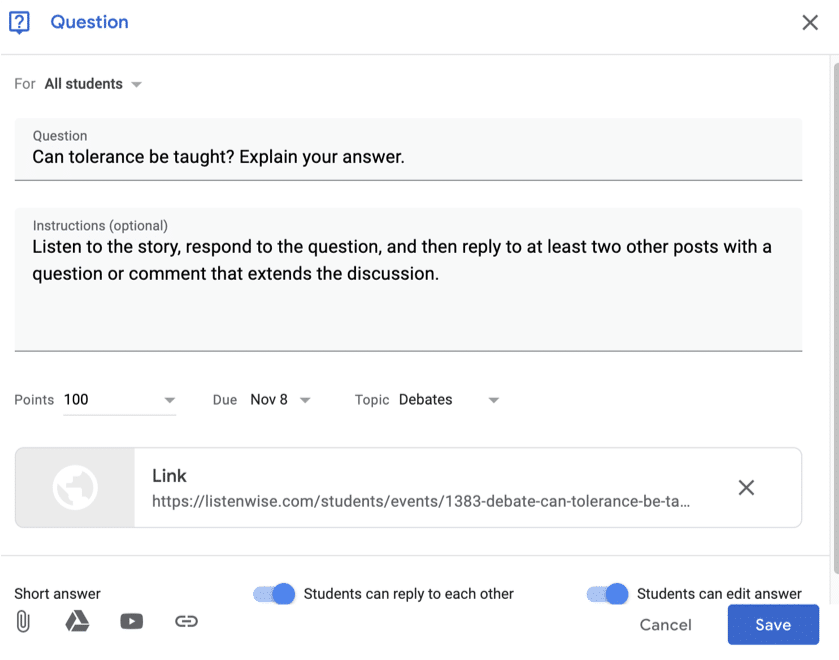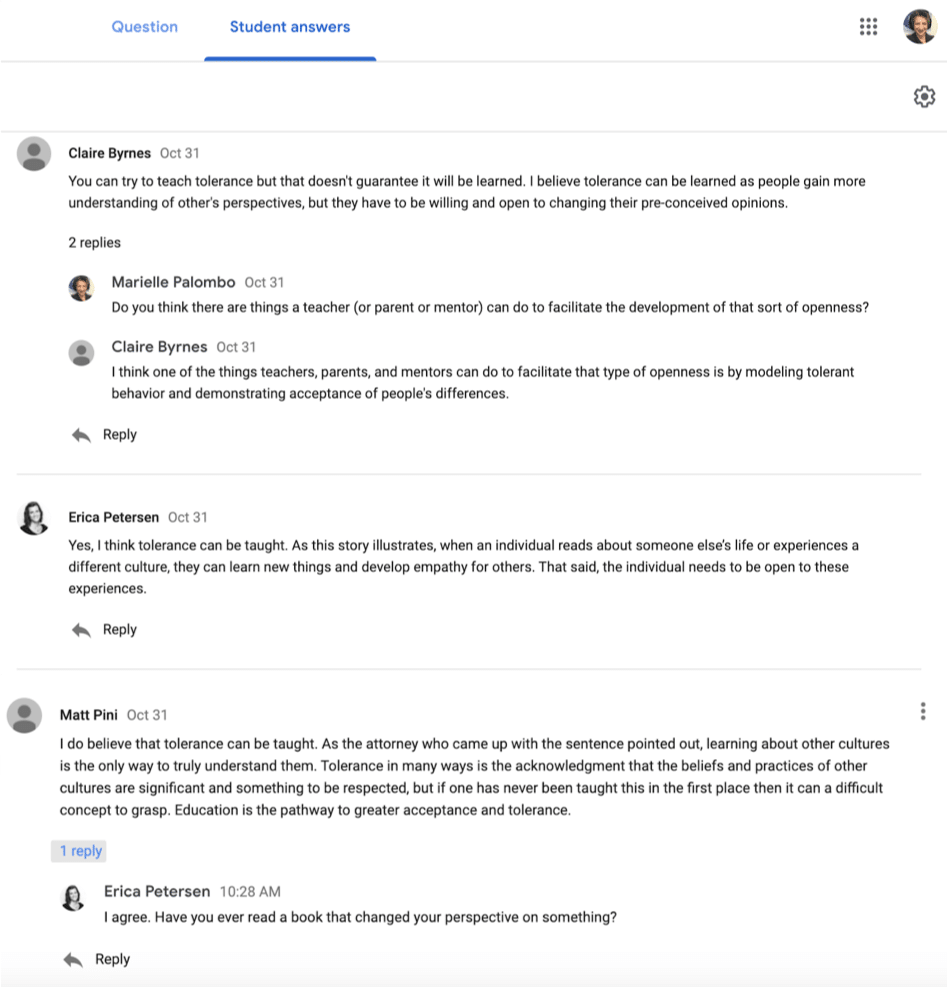Last Updated on September 6, 2024
Engaging students in substantive, meaningful discussions that demand critical and creative thinking can be challenging in any instructional context. When the magic happens, however, such conversations can be the stuff of teachers’ most memorable classroom moments. Moreover, teaching argument is a key component of state and national standards, including CCSS ELA and WIDA.
Google Classroom allows teachers to set up online discussions very easily, making it a perfect app to use in conjunction with Listenwise lessons— particularly our debate stories! Well-framed, authentic, respectful academic discussions provide opportunities for students to build effective arguments backed with evidence, make connections between someone else’s experiences and their own, or explain their understanding of a complex phenomenon using academic language.
Learning Benefits of Online Discussions
While face-to-face discussions can work well to support the development of important speaking skills and cultivate positive classroom culture in many circumstances, they also have limitations. For example, face-to-face conversations are linear, meaning that only one person can speak at a time. Often, in the spirit of fairness, teachers try to ensure that many students have a chance to contribute to a group discussion, which can have the effect of discouraging back-and-forth exchanges that probe more deeply into a topic and engage students in thinking collaboratively.
Setting Up Online Discussions in Google Classroom
When viewing a Listenwise story, after clicking “Share Audio” and then “Share link to Google Classroom,” choose a class, and select “Ask question” when prompted to “Choose action.” Add one of the discussion questions from a Listenwise story (or create a new one), and then provide clear instructions to accompany the link to the story. Make sure that “students can reply to each other” and “students can edit answer” are both selected, so students can engage in dialogue after they have shared their initial response and fix any errors once their responses are posted. As with any assignment, add a due date, and then click on “Ask.”It is also possible to do this from Google Classroom by choosing the “Question” option when creating an assignment. You might, for example, ask students to listen to the audio story and then discuss the question, “Can tolerance be taught?“

Moderating Online Discussions in Google Classroom
It is helpful to provide clear instructions for how students are expected to participate in an online discussion, including expectations for responding to others. Ideally, the prompt should be open-ended and require that students contribute their own ideas and interact with each other constructively. Listenwise discussion questions are designed to generate dialogue about an audio story by engaging students in higher order thinking about important ideas and connecting those stories to their own experiences. To that end, it is helpful to give students room to respond to each other before entering the discussion. When doing so, it can be useful to model the types of interactions expected of students, such as asking clarifying or probing questions, prompting elaboration, or offering counter-arguments or corroborating examples. It is important not to dominate the discussion so that students feel ownership and freedom to express themselves genuinely.
While the Google Classroom “Question” discussions are not completely threaded, they do indent at the first reply to a student’s response, which helps to track exchanges.

Assessing Online Discussion Participation
Another benefit of online discussions is that they create artifacts of student work, unlike face-to-face discussions (unless they are recorded). Student participation can be assessed using a rubric such as this one.
Online discussions can provide helpful formative assessments, offering a window into student understanding that can inform subsequent instruction. They can also be used as an intermediary step in the writing process, allowing students to work through their ideas in conversation in preparation for an independent writing assignment. For example, students might discuss a topic such as “Can tolerance be taught?” online and then build upon their contributions and develop them into an argumentative essay.


